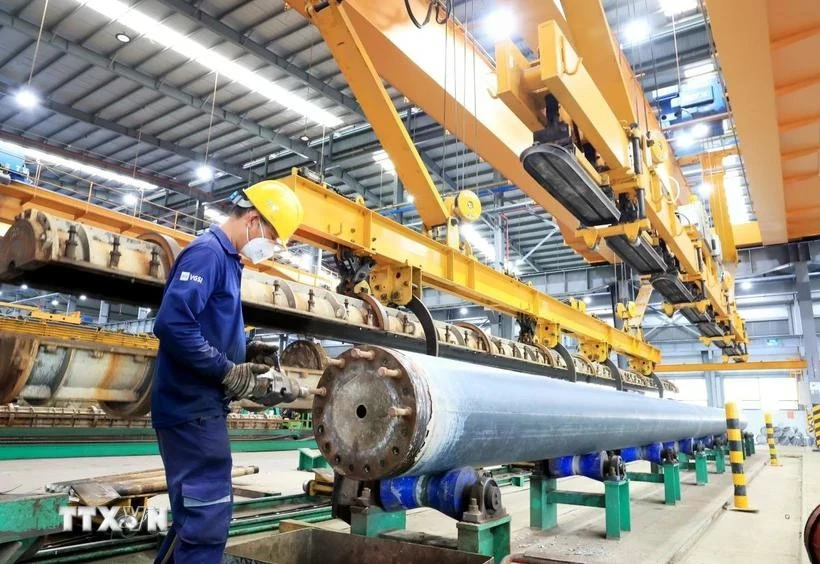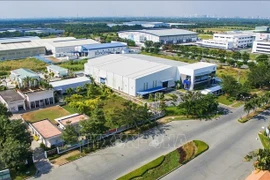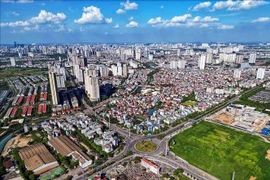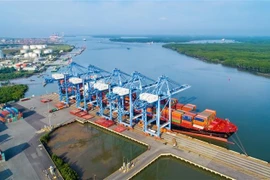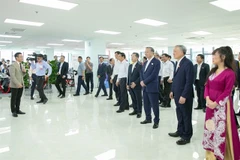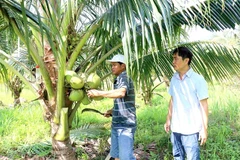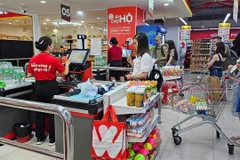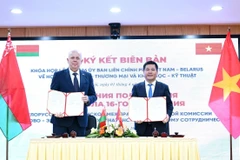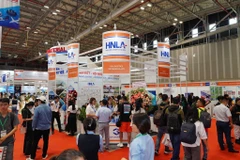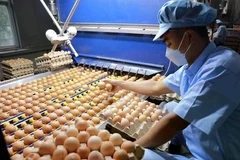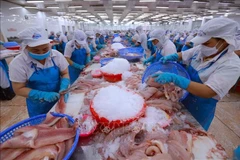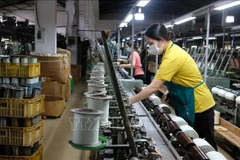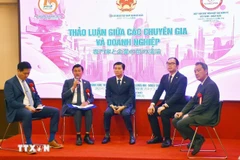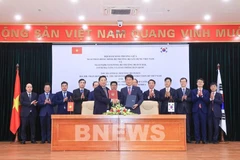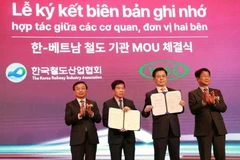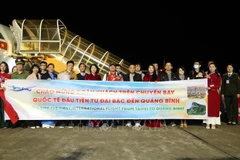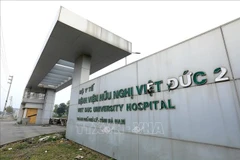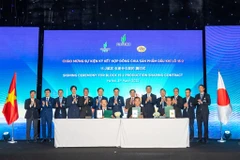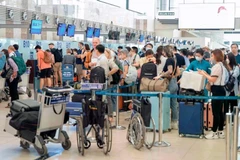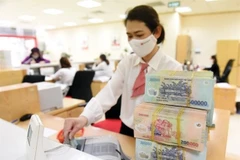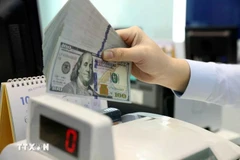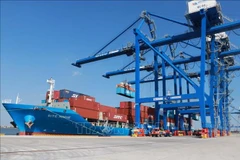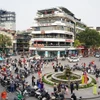HCM City (VNA) – A slew of policies has been put in place to attract foreign direct investment (FDI) capital, which is seen as an important driver for Vietnam’s high economic growth targets in 2025 and the subsequent years.
An appealing investment destination
According to the National Statistics Office, total registered FDI in Vietnam reached nearly 6.9 billion USD in the first two months of 2025, or a 35.5% increase as compared to the same time last year. Disbursed capital was estimated at 2.95 billion USD, up 5.4% year-on-year.
These figures demonstrate foreign investors' robust confidence in the Vietnamese business environment. At the Conference on Investment Fund and Foreign Investment in Vietnam's New Era of Development recently held in Ho Chi Minh City, many foreign associations and businesses expressed this sentiment.
Vice President of the Korean Chamber of Commerce (KOCHAM) in Vietnam Jeong Jihoon said that while investment flows into many countries worldwide have stagnated, Vietnam maintains impressive FDI attraction levels. Businesses from the Republic of Korea described Vietnam as an attractive investment destination with numerous development advantages, as the country has actively implemented large-scale infrastructure projects such as the high-speed railway, urban railways, nuclear power plants, and gas power plants. Besides, the Vietnamese Government has advanced supporting policies for research and development activities as well as provided incentives for IT and high-tech industries.
Notably, thanks to its favourable geographical position, Vietnam has developed sound logistics and transportation systems while maintaining diplomatic stability, helping reduce barriers in trade activities.
With these advantages, businesses worldwide, especially those from the RoK, highly appreciate the potential of landing FDI in Vietnam and consider it one of their top priorities when considering overseas investment expansion, Jeong Jihoon said.
Meanwhile, Vice President of the Singaporean Businesses Group in HCM City Yee Chung Seck called Vietnam a rising star in the global economy, with its growth trajectory continuing to attract attention from investors worldwide. The country has been proactive in attracting FDI, with efforts to simplify administrative procedures, cut tariffs, and provide tax incentives, he said, stressing Vietnam’s engagement in a wide range of free trade agreements like the Comprehensive and Progressive Agreement for Trans-Pacific Partnership and the EU – Vietnam Free Trade Agreement provides a favourable position in global trade network, enhance Vietnam’s market access, and facilitate FDI.
From a business perspective, Marc Woo, Managing Director of Google Vietnam, also stated that Vietnam is an important partner for Google, with numerous investments in startup support and AI development. Google's recent office opening in HCM City also demonstrates its long-term commitment to the Vietnamese market.

Removing roadblocks in FDI attraction
Despite achieving many positive results, foreign investment attraction still faces certain obstacles and difficulties. In practical investment implementation and business operations, FDI enterprises encounter numerous challenges due to administrative procedures that are not truly streamlined and tax policies that remain inconsistent and unpredictable.
Although Vietnam has great advantages of its young and dynamic workforce, it needs to address skill gaps to meet enterprises’ requirements. Many FDI businesses believe that to attract and retain investors, it is necessary to develop a high-quality workforce and a harmonious and modern infrastructure system.
Vice Chairman of the Vietnam Business Forum Nitin Kapoor said that to strengthen investor confidence, policies should be consistent, clear, and highly predictable. This is especially critical for sectors requiring long-term investment such as high technology, renewable energy, and infrastructure. For Vietnam to attract quality capital, the country should promote digital transformation, develop renewable energy, and expand green supply chains. At the same time, policies encouraging businesses to comply with environmental, social, and governance (ESG) standards will help Vietnam become an attractive destination for advanced industries and the global green economy, he said, elaborating investors are increasingly interested in green, clean and high-tech projects.
A KOCHAM representative suggested Vietnam complete its public administrative procedure system through digitalisation and upgrade of management system to enhance coordination with competent authorities. This will help FDI enterprises access the market more quickly, thereby promoting stronger investment flows into Vietnam.
According to Minister of Finance Nguyen Van Thang, the ministry will join hands with other ministries, sectors, and localities to remove obstacles in the FDI attraction process by further improving the business environment and reducing administrative costs and procedures. Besides, it will promote public-private partnerships with corporations and investment funds that have sustainable capital, operate efficiently, possess management experience, and follow good business models to participate in projects on strategic infrastructure, AI, semiconductors, science and technology, innovation, digital transformation, renewable energy, and more.
Thang said selective investment attraction policies will be issued, prioritising projects with spillover effects, adding policy dialogues will be maintained to discover the difficulties that investors are facing in a timely fashion as well as facilitate their investment in Vietnam.
He suggested investment funds and the business community build long-term, sustainable, and environmentally friendly business strategies in Vietnam, calling on enterprises to implement good corporate culture and policies for workers, while raising timely recommendations for appropriate policies./.
